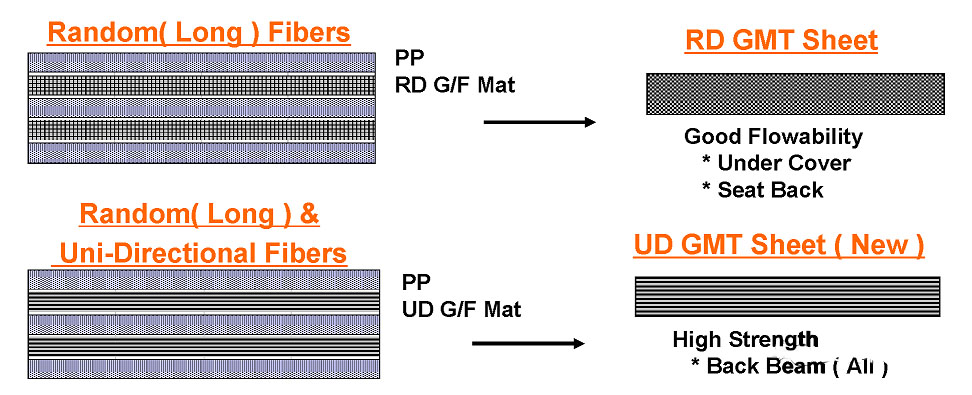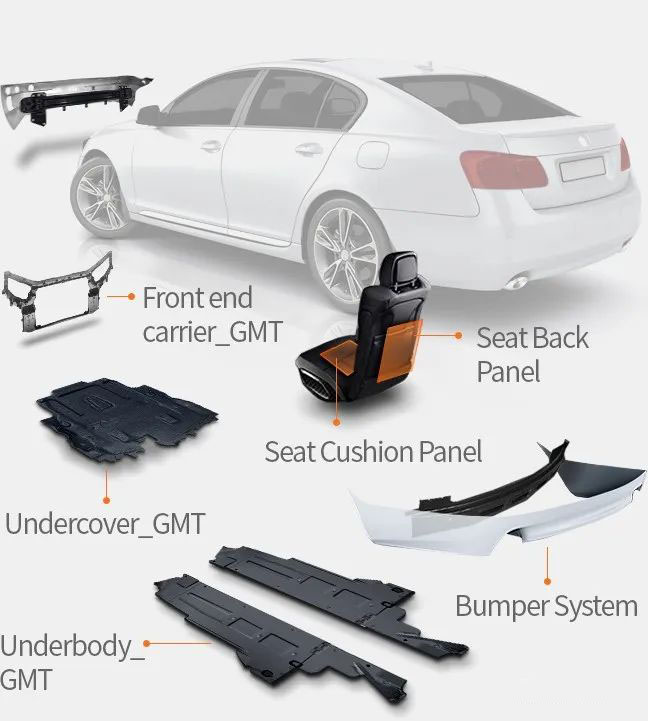Glass Mat Reinforced Thermorplastic (GMT) refers to a novel, energy-saving and lightweight composite material that uses thermoplastic resin as a matrix and glass fiber mat as a reinforced skeleton. It is currently an extremely active composite material in the world. The development of materials is regarded as one of the new materials of the century. GMT can generally produce sheet semi-finished products, and then directly process them into products of the desired shape. GMT has complex design features, excellent impact resistance, and is easy to assemble and reprocess. It is praised for its strength and lightness, making it an ideal structural component to replace steel and reduce mass.

1. The advantages of GMT materials
1. High specific strength: The strength of GMT is similar to that of hand-laid polyester FRP products. Its density is 1.01-1.19g/cm, which is smaller than thermosetting FRP (1.8-2.0g/cm), so it has higher specific strength. .
2. Lightweight and energy-saving: The self-weight of the car door made of GMT material can be reduced from 26Kg to 15Kg, and the thickness of the back can be reduced, so that the space of the car is increased. The energy consumption is only 60-80% of that of steel products and 35 of that of aluminum products. -50%.
3. Compared with thermosetting SMC (sheet molding compound), GMT material has the advantages of short molding cycle, good impact performance, recyclability and long storage period.
4. Impact performance: GMT’s ability to absorb impact is 2.5-3 times higher than that of SMC. Under the action of impact, dents or cracks appear in SMC, steel and aluminum, but GMT is safe.
5. High rigidity: GMT contains GF fabric, which can maintain its shape even if there is an impact of 10mph.
2. Application of GMT materials in the automotive field
GMT sheet has high specific strength, can produce lightweight parts, and has high design freedom, strong collision energy absorption, and good processing performance. It has been widely used in the automobile industry abroad since the 1990s. As the requirements for fuel economy, recyclability and ease of processing continue to increase, the market for GMT materials used in the automotive industry will continue to grow steadily. At present, GMT materials are widely used in the automotive industry, mainly including seat frames, bumpers, dashboards, engine hoods, battery brackets, pedals, front ends, floors, guards, rear doors, car roofs, luggage Brackets, sun visors, spare tire racks and other components.
Post time:
Aug-02-2021







